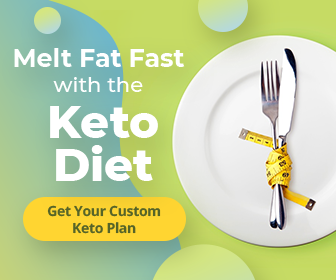If you’re trying to build muscle, strength training is the best way to do it. Strength training damages the muscles, which causes them to repair and grow. The result is bigger, stronger muscles.
However, optimal muscle growth goes beyond your actual workout. It also relies on post-workout nutrition. Your muscles need enough protein and carbohydrates to effectively recover.
Many people claim you should eat a post-workout meal during the “anabolic window.” This term refers to the short time after training when your muscles are repairing and recovering. It’s also called the metabolic window or protein window.
Allegedly, the anabolic window lasts 30 minutes. If you want maximum results, you should consume protein and carbs within this time frame. Eating a meal after these 30 minutes is supposedly less helpful.
Many people use this concept to practice precise nutrient timing. As it turns out, there’s little scientific proof to back the strategy. Read on to learn about the anabolic window theory and why it doesn’t exist.
The anabolic window theory is based on your body’s anabolic response.
Anabolism is when small molecules grow into bigger, complex molecules. These molecules form into new cells and tissues, including muscle. It’s the opposite of catabolism, or when larger molecules break down.
After strength training, your body is in an anabolic state. This involves a range of cellular processes that facilitate muscle repair and growth. These processes are fueled by protein and carbs.
According to the anabolic state theory, this anabolic response is a limited time frame of only 30 minutes. It also claims that immediately eating protein and carbs is critical for:
- increasing protein synthesis
- reducing muscle protein breakdown
- replenishing muscle glycogen
There’s some merit to these claims. According to a
Post-workout nutrition can affect these processes. Protein intake limits MPB and supports MPS. Carb intake also inhibits MPB and aids glycogen resynthesis. Glycogen provides energy for your muscles.
After exercising, it might seem logical to immediately eat protein and carbs to suppress MPB. It’s also assumed that this will increase muscle mass by increasing NBAL. That’s where the theory oversimplifies the science.
Changes in muscle size depend on myofibrillar proteins. To increase muscle mass, the suppression of MPB would need to solely target these proteins.
However, MPB affects many types of proteins. This includes muscle proteins that rapidly turn over or have been damaged. Degrading these proteins may be essential to remodel muscle. This suggests that trying to limit MPB through post-workout nutrition might actually hinder proper recovery.
Plus, aside from nutrition, there are many factors that affect recovery and growth, including age, hormones, and training routine.
There also isn’t hard evidence that says the anabolic window is only 30 minutes long. It’s not clear where the suggested time frame came from.
The concept of a narrow anabolic window is a widespread belief. Research shows that it’s not as short or as simple as it seems.
A small
An older
The role of immediate protein intake on muscle protein breakdown may also be exaggerated.
While it’s true that muscle breakdown increases after training, a 2009 article says this effect is brief.
A
The exception is if you worked out while fasting. According to an older 2003 study, fasted exercise significantly increases post-training muscle breakdown. So, if you don’t eat before training, it’s important to eat right after.
Finally, a
The concept of an anabolic window doesn’t have much scientific proof.
Therefore, training to take advantage of this window may not be essential. It’s neither good nor bad for your health.
There’s also no harm in consuming protein and carbs immediately after training. If this suits your lifestyle, then feel free to stick with it.
What is good for your health is incorporating exercise and a balanced diet.
If you’d like to try anabolic exercise, here’s what you should do:
- Strength train. Strength training, or resistance training, promotes anabolism and muscle growth. You can achieve this by lifting weights or doing bodyweight exercises.
- Consume enough carbs and protein. Generally, it’s recommended to eat carbs and protein at a 3 to 1 or 4 to 1 ratio.
- Eat within 30 minutes after a workout. The purported anabolic window lasts 30 minutes after your workout. You can save time by preparing your meal before exercising.
With all exercise routines, be sure to stay hydrated. Drinking water before, during, and after exercise is important, whether you’re trying anabolic exercise or not.
According to research, the 30-minute anabolic window doesn’t exist, meaning that a later post-workout meal won’t significantly hinder muscle growth. This suggests that eating protein and carbs immediately after exercise isn’t critical for maximum gains.
Eat your post-workout meal when it works for you. This could be before training, right after, or later on. The exception is if you train in a fasted state, which means you should have a post-workout meal soon after.
 Reviewed by Michael Odega
on
October 15, 2021
Rating:
Reviewed by Michael Odega
on
October 15, 2021
Rating:










No comments: